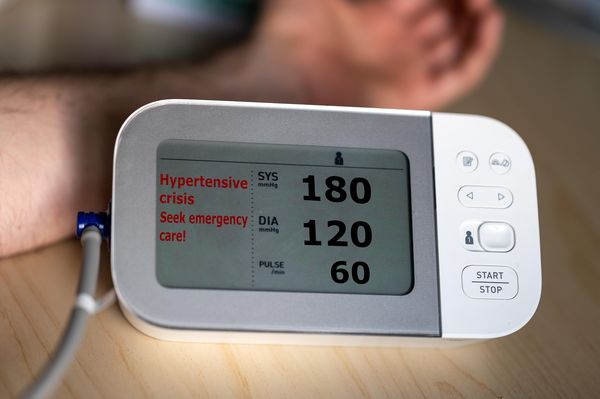
“Walking is the best form of exercise you can do because it’s easily accessible; there are low barriers to entry in terms of things like cost, equipment and skill requirements,” walking expert and University of Alabama professor Dr Elroy Aguiar tells me.
As a fitness writer, I agree, which is why you’ll often find me writing about the many mental and physical benefits of a brisk stroll. The more people I can persuade to spend a little extra time on their feet, the better.
Off the back of these articles, I’ve had several people tell me how they already hit the heralded 10,000 steps a day. It’s an arbitrary target, scientifically speaking, but not a bad goal on the whole. Of course, hitting your step count is to be applauded, and will create a solid base level of health and fitness, but the whole point of laying strong foundations is to build on them when you have the chance.
“Walking 10,000 steps a day is a good starting point, but ideally we want people to progress [from here] and start to engage in exercise beyond just walking, such as moving on to other forms of moderate-vigorous exercise that elevate your heart rate and oxygen consumption as well,” says Dr Aguiar.
With this in mind, and new year’s resolutions front of mind, here are three next steps you can take to further your fitness beyond walking 10,000 steps a day.
Strength training
The pay-off from a couple of strength training workouts per week is huge. Not only can you build muscle, but you can also strengthen your bones, ligaments and joints to reduce your risk of injury, improve your body composition (your ratio of muscle to fat) for a leaner physique, increase your mobility and even pump up your heart health. Millions, myself included, swear by its ability to boost your mood too.
It’s no wonder the NHS activity guidelines say adults should aim to “do strengthening activities that work all the major muscle groups on at least two days of the week”, alongside 150 minutes of moderate-intensity exercise (ie. walking) or 75 minutes of vigorous-intensity activity.
But these strength training workouts don’t have to mean an hour-long trip to the gym. It could be as simple as getting your fitness fix at home with bodyweight exercises like press-ups and squats, or investing in a couple of dumbbells, resistance bands or a single kettlebell to upgrade your training options.
If you’re short of ideas, this three-move kettlebell workout and kettlebell training tips from legendary strength coach Dan John are the perfect place to start.
Rucking
The term rucking simply means walking with weights, and the practice really came into vogue in 2024. I’m ever-sceptical of fitness trends, but when I tried walking 10,000 steps a day with a weighted backpack, I decided that this one deserved its popularity. Why? Because it makes walking harder, and challenge tends to lead to change, as far as the human body is concerned.
The body adheres to the SAID principle, or “specific adaptations to imposed demands”. Put simply: it adapts to be able to handle the activities you regularly ask it to do. If you’re consistently walking 10,000 steps a day, that’s great, and it will continue to contribute to your energy balance while maintaining most people’s fitness levels. But if you want to make improvements, you need to do something more difficult.
This could mean going for a longer walk, tackling some steep terrain, increasing your pace or even breaking into a run. However, if you want a low-impact option that doesn’t take any extra time, rucking is the answer.
“You’re carrying extra weight, and that extra weight costs you energy to move,” says Dr Aguiar. “If you’re adding weight, it’s going to increase your heart rate and your oxygen consumption.”
“Rucking can be for almost anyone,” adds Nicole Cihlar, director of training at rucking specialists GoRuck. “It’s a [low-impact] way to amplify your walk and add that resistance training element without putting a lot of extra strain on your joints or needing a personal trainer to teach you what to do. You simply put the ruck on and go out for a walk.”
You can also turn your ruck into a full-body training session by incorporating a few muscle-building moves like lunges and presses. Take a look at Cihlar’s sample rucking workout to find out how.
Read more: I stopped drinking for six months – five reasons why it’s one of the best things I’ve ever done
Running
Walking is an efficient and effective way to get moving. The health benefits can be huge too, particularly if you were struggling to squeeze much movement into your day beforehand.
“Especially if you’re sedentary, the first few weeks or months of walking will improve your fitness, and then your body is going to adapt,” says Dr Aguiar.
“Generally speaking, if you improve your baseline steps by about 2,000 steps [per day], which for most people would equate to about 10 or 20 per cent, that’s a sufficient amount of extra activity to improve health markers like blood pressure and body composition.”
Beginners may also see improvements in their cardiovascular fitness. But, once you’ve started to hit this goal regularly, it’s time to set a new one, Dr Aguiar says.
“That’s when you need to progress. You need to walk faster or start jogging at a slow pace to push the body to improve your cardiovascular fitness. That’s where a lot of the benefits will come.”
Whatever your fitness level, if you’ve mastered walking, our guide on how to start running can help you take things to the next level and set new challenges for yourself.
Read more: The exact workout triathlete Alex Yee used to win Olympic gold
Any form of movement you enjoy
Moving more than you already do is going to benefit the vast majority of people, so the best thing you can do is find something you love and stick with it. After all, the workout you do is always going to be more effective than the workout you skip because you don’t enjoy it, however optimal the latter session may claim to be.
The options above are merely suggestions of activities you could try, designed to maximise time-efficiency and bang for your buck in the mission to improve your health and fitness levels. But if there’s an activity you love which keeps you coming back for more, I’d recommend building your fitness plans around it.
Read more: I trained like Anne Hathaway for a month, and the results surprised me







